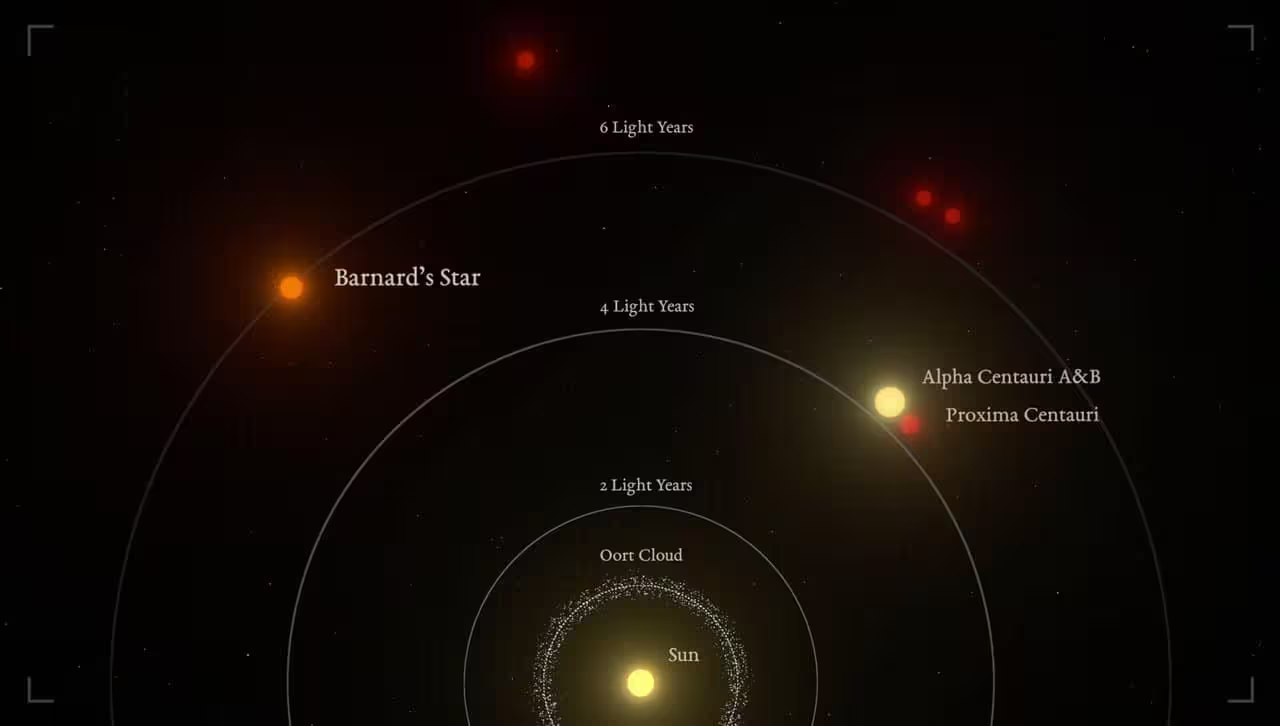Scientists found an exoplanet near our closest star
- October 1, 2024
- 0
In the search for habitable planets, scientists focused on faint stars close to the solar system. And now, astronomers have finally confirmed the existence of an exoplanet, not
In the search for habitable planets, scientists focused on faint stars close to the solar system. And now, astronomers have finally confirmed the existence of an exoplanet, not

In the search for habitable planets, scientists focused on faint stars close to the solar system. And now, astronomers have finally confirmed the existence of an exoplanet, not the one detected in 2018, but Barnard’s star, the only star closest to us. Barnard’s Star, or GJ 699, is an extremely bright red dwarf located 5.96 light-years from the Sun. The only thing closer to us is the triple system Alpha Centauri, which is 4.36 light-years away.
In an article published in the journal in 2018 NatureAstronomers reported the discovery of a candidate exoplanet next to GJ 699. According to estimates, it was supposed to be an icy super-Earth 3.3 times larger than Earth, with an orbital period of 233 Earth days. A few years later, in 2021, another group of scientists disputed the findings, arguing that the false signal was due to stellar activity.
Stellar activity is likely the main source of false positive detections of exoplanet candidates. Long-term observations help detect such errors. Such data is collected by the ESPRESSO instrument, a powerful spectrograph installed at the Paranal Observatory in Chile. It combines observations from telescopes as part of the VLT. Its main purpose is to find and study exoplanets and their atmospheres. Barnard’s star has become one of the main objects to observe. There are several reasons for this: low stellar activity and proximity to the Solar System, which makes it easier to study.
The ESPRESSO device tracked the Barnard star for four years, from May 2019 to July 2023. In total, he collected 157 observations. In a new study published in the journal Astronomy and AstrophysicsScientists analyzed these results and confirmed them with data from other instruments specialized in the search for exoplanets: HARPS, HARPS-N and CARMENES.
Neither by a “blind” search nor by the intention of the authors of the new scientific study did they find signs of the existence of an exoplanet with an orbital period of 233 Earth days. Analysis of ESPRESSO data denies its existence. Instead, astronomers found four other exoplanet candidates with periods of less than 10 days. One was even confirmed.
The planet GJ 699 orbits Barnard’s star in 3.15 Earth days. With a mass of 0.37 Earth masses, it is three times larger than Mars and half as small as Venus. Unfortunately, the exoplanet is abandoned: it flies very close to the star, at a distance of about 0.028 AU. According to the authors of the study, the habitable zone of Barnard’s star begins at a distance of 0.049 AU.
The remaining three exoplanet candidates are planets smaller than Earth that fly closer to the inner limit of the habitable zone. Orbital periods (based on signal strength): 4.12, 2.34 and 6.74 Earth days. Further observations with ESPRESSO are needed to confirm or deny their existence.
“Barnard b is one of the smallest exoplanets we know of, and one of the few planets smaller than Earth. But this planet is very close to its star, closer than is habitable. Although this star is 2,500 degrees cooler than the Sun, it is still too small to hold liquid water on its surface.” hot,” explained Jonay Gonzalez Hernandez (Jonay González Hernández, the lead author of the new paper, is a researcher at the Canary Institute of Astrophysics in Spain.
Red dwarfs are cooler and dimmer than Sun-like stars, so their habitable zones are much closer to the bright star. Therefore, when we search for planets with short periods among red dwarfs, we are much more likely to find a planet in the habitable zone. Moreover, if this red dwarf is quite close to us, it will be possible to study the exoplanet’s atmosphere and detect biomarkers, which are signs of the potential existence of life.
In recent years, in the quest to find Earth’s “twin,” astronomers have focused on red dwarfs near the Solar System. It is the most common type of star in the galaxy. About 80% of the stars in the outskirts of our system are red dwarfs.
By far it is easiest for astronomers to detect exoplanet candidates in a short period of time; It is easier to collect sufficient observations on them. The shorter the orbital period, the closer the planet flies to the star.
Source: Port Altele
As an experienced journalist and author, Mary has been reporting on the latest news and trends for over 5 years. With a passion for uncovering the stories behind the headlines, Mary has earned a reputation as a trusted voice in the world of journalism. Her writing style is insightful, engaging and thought-provoking, as she takes a deep dive into the most pressing issues of our time.